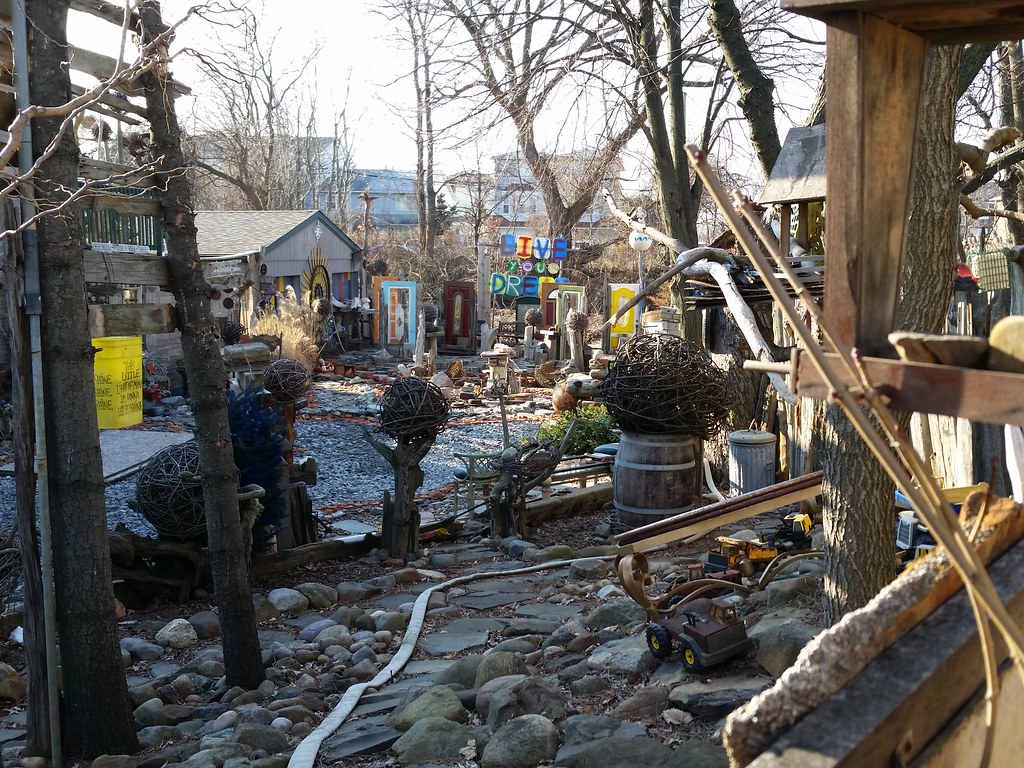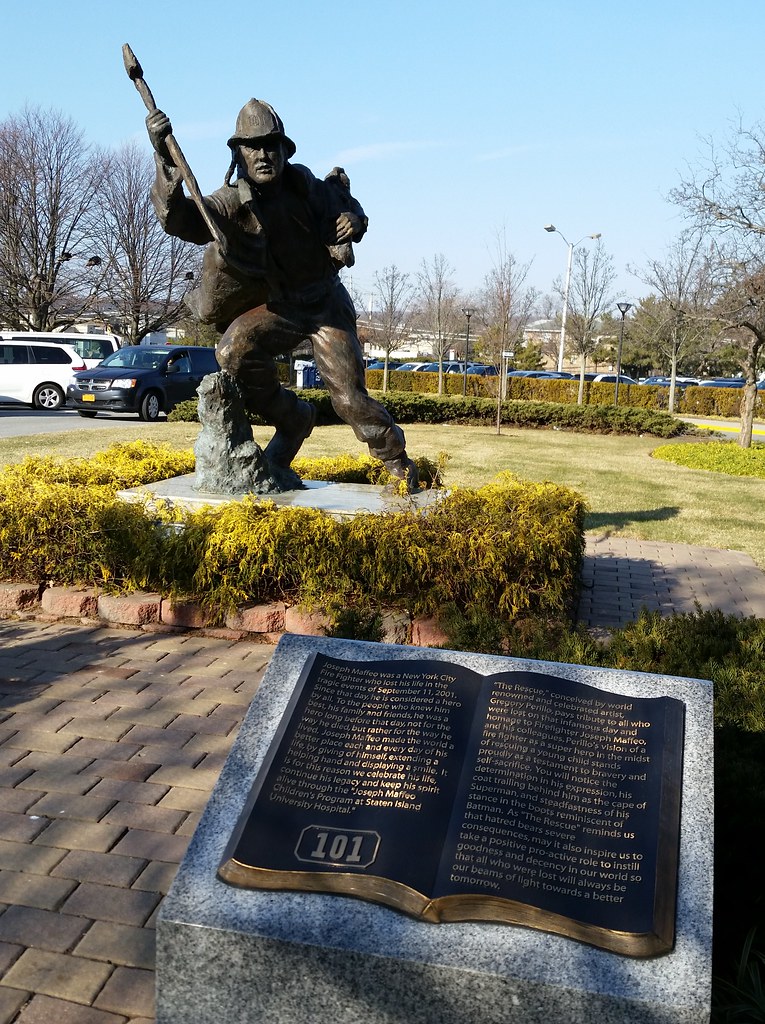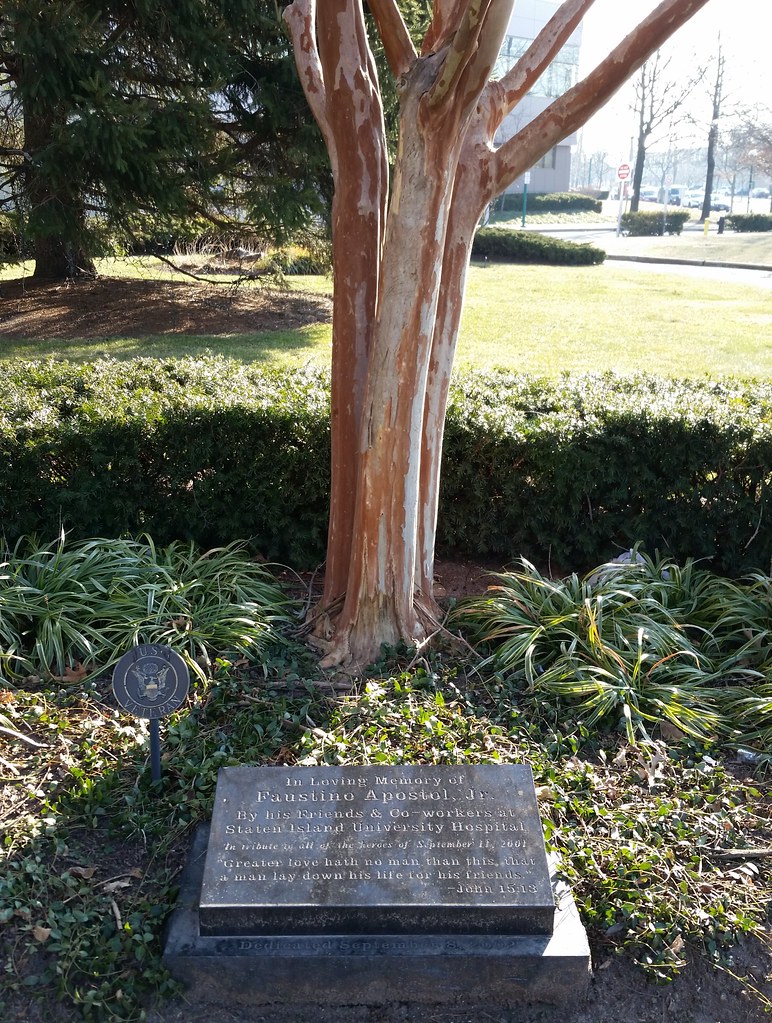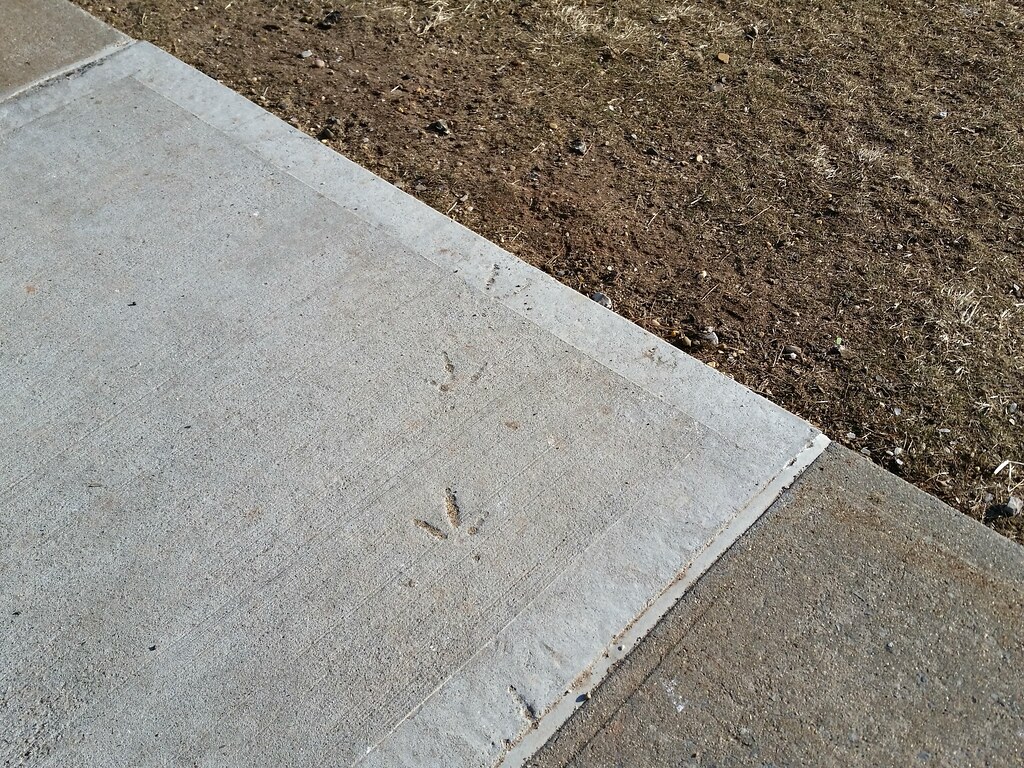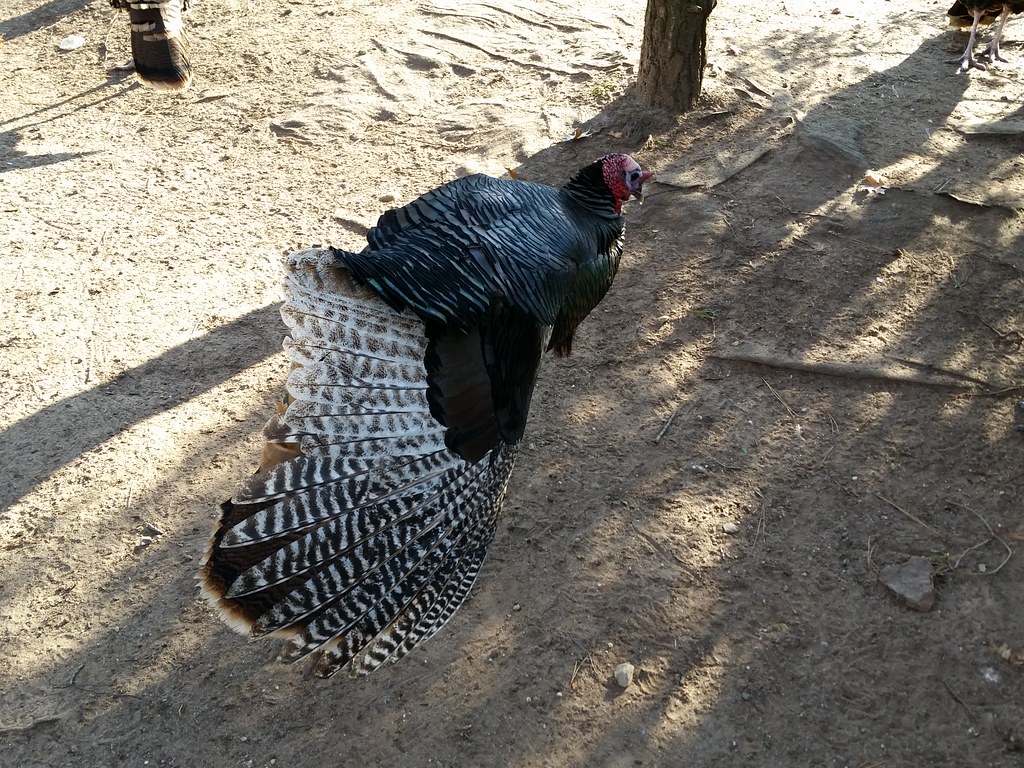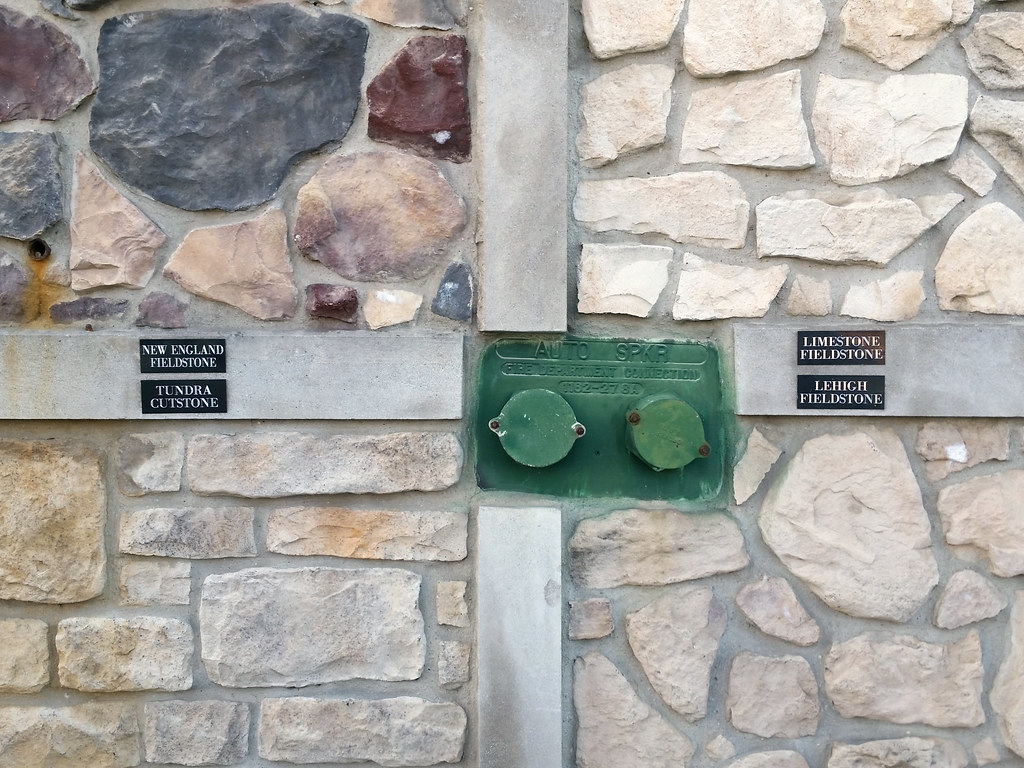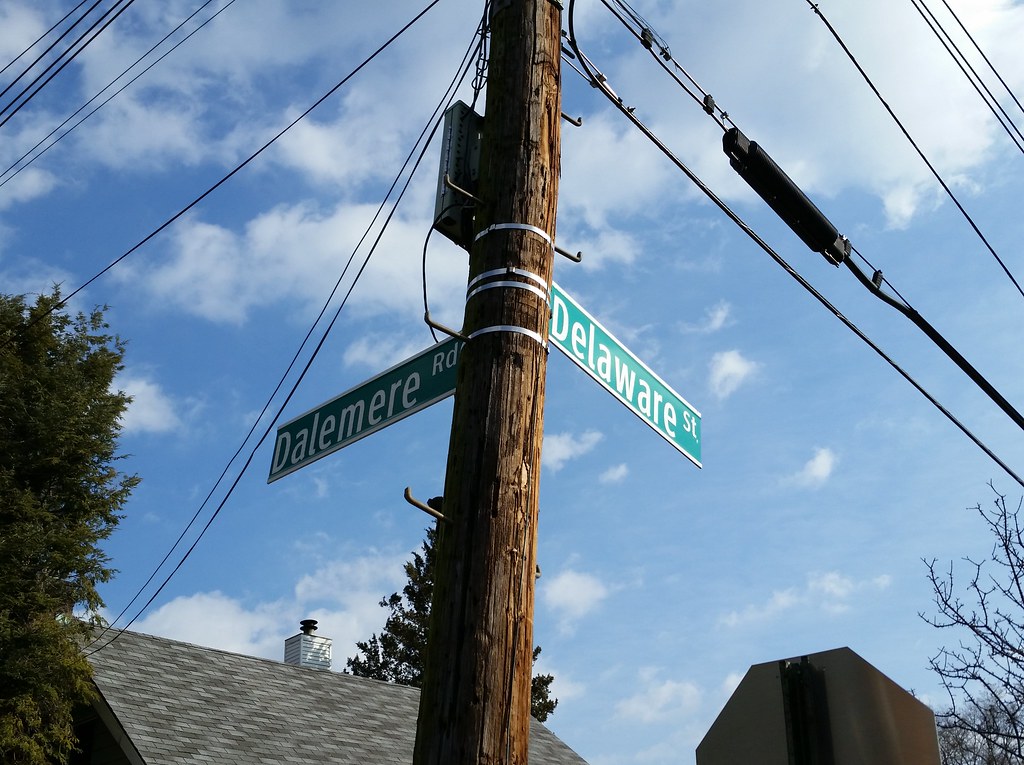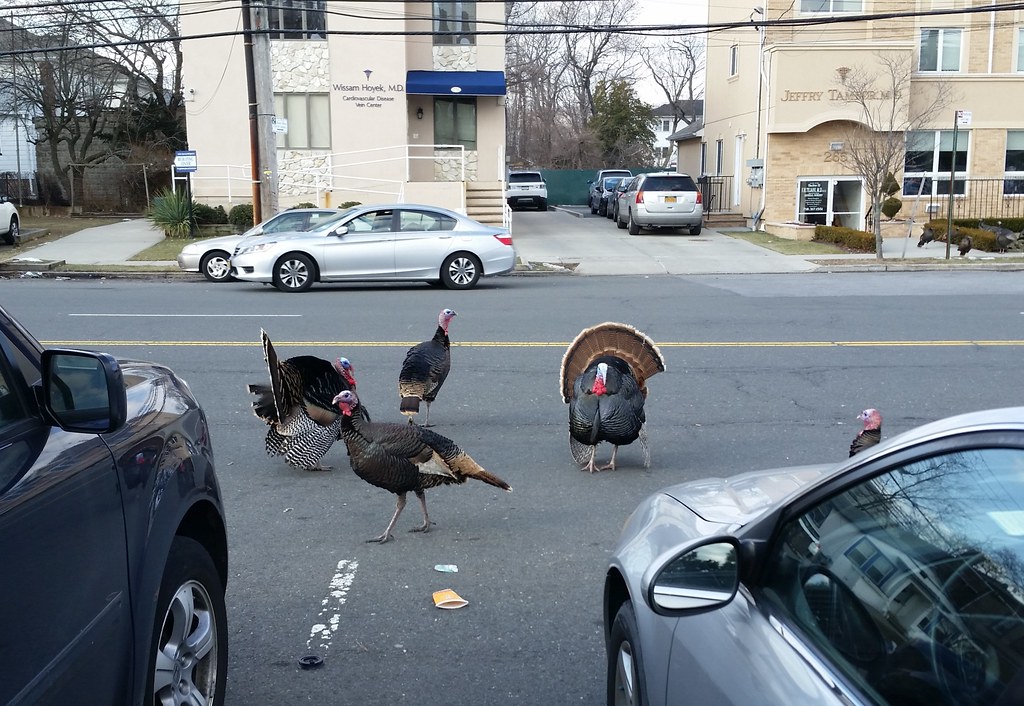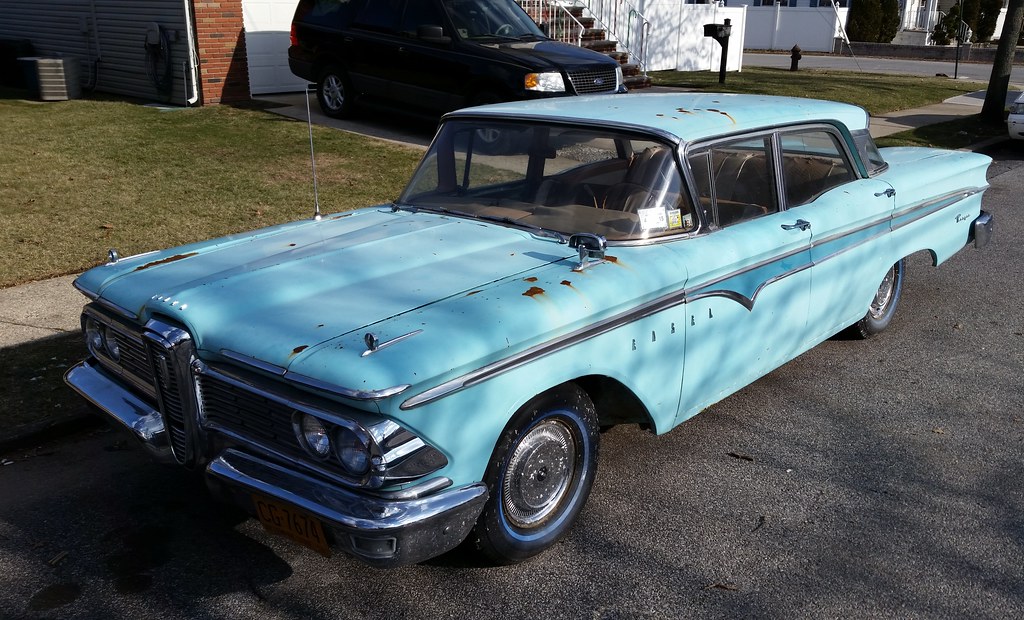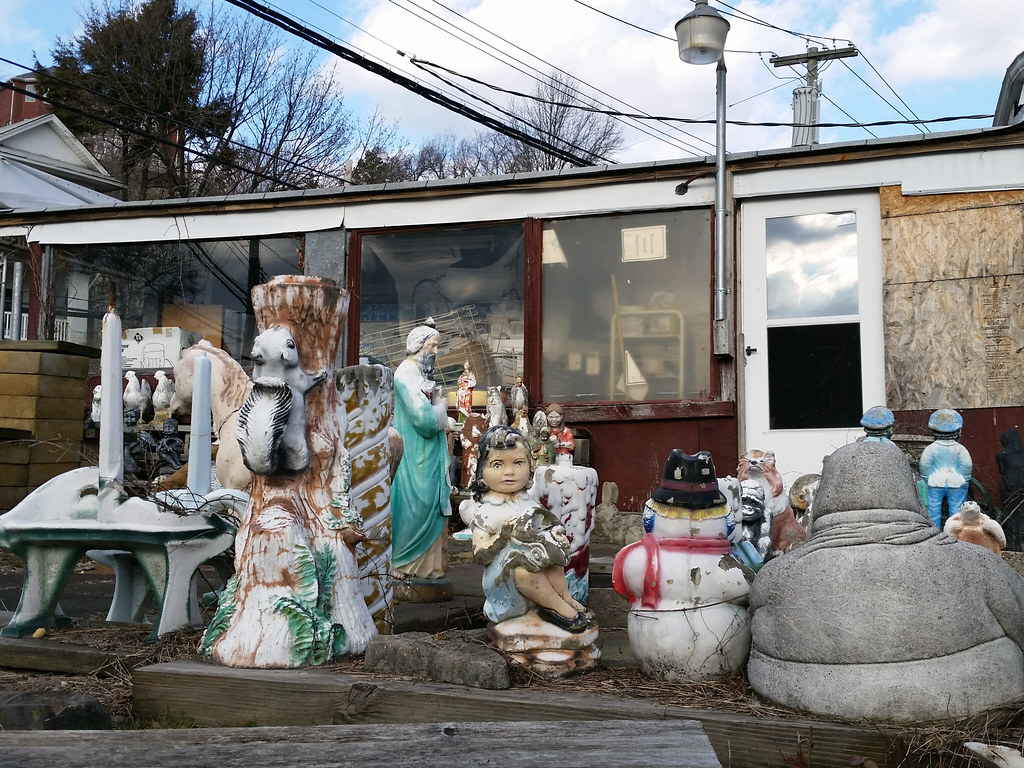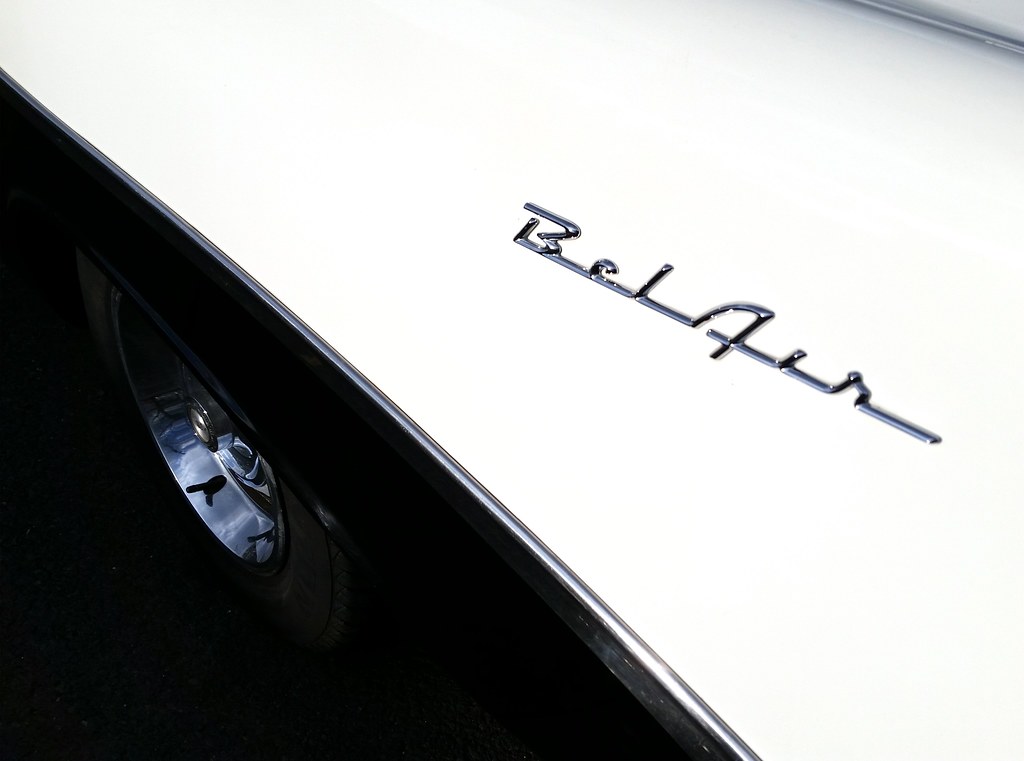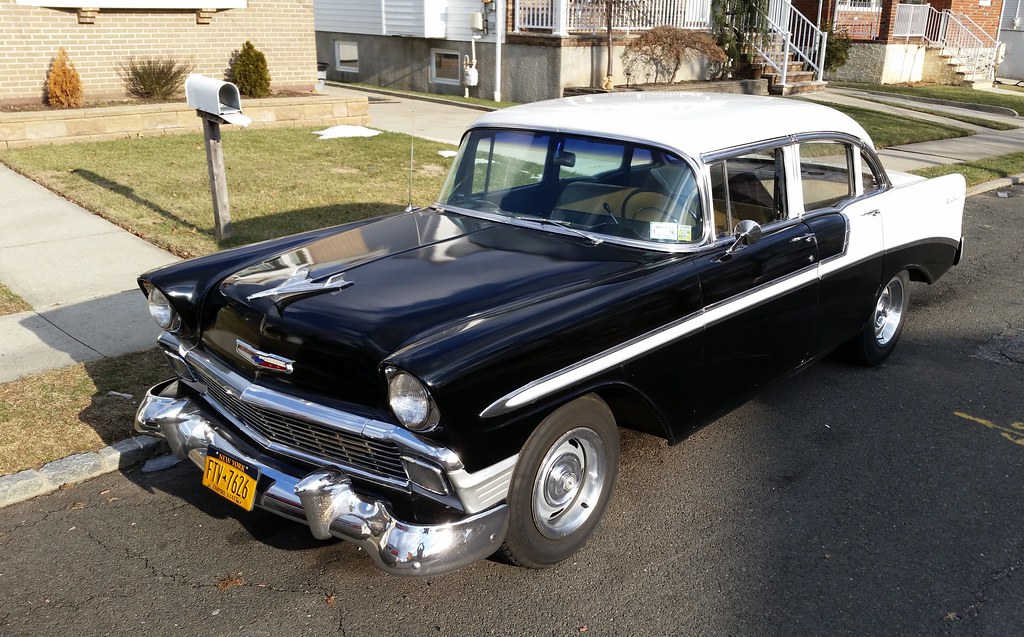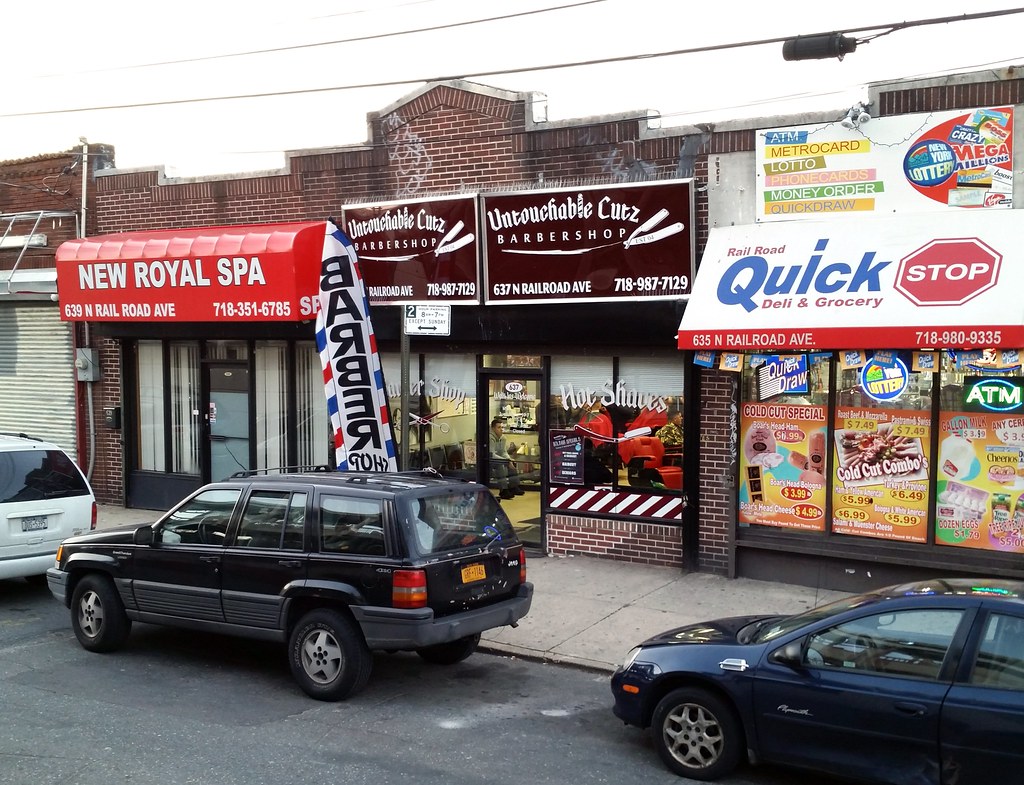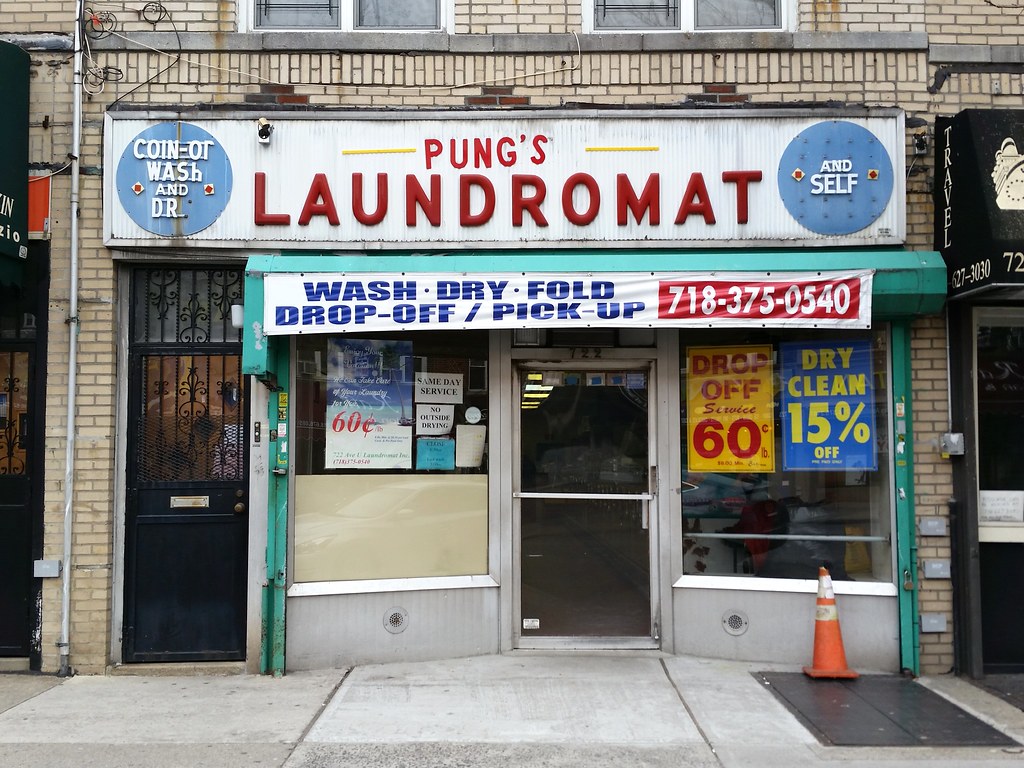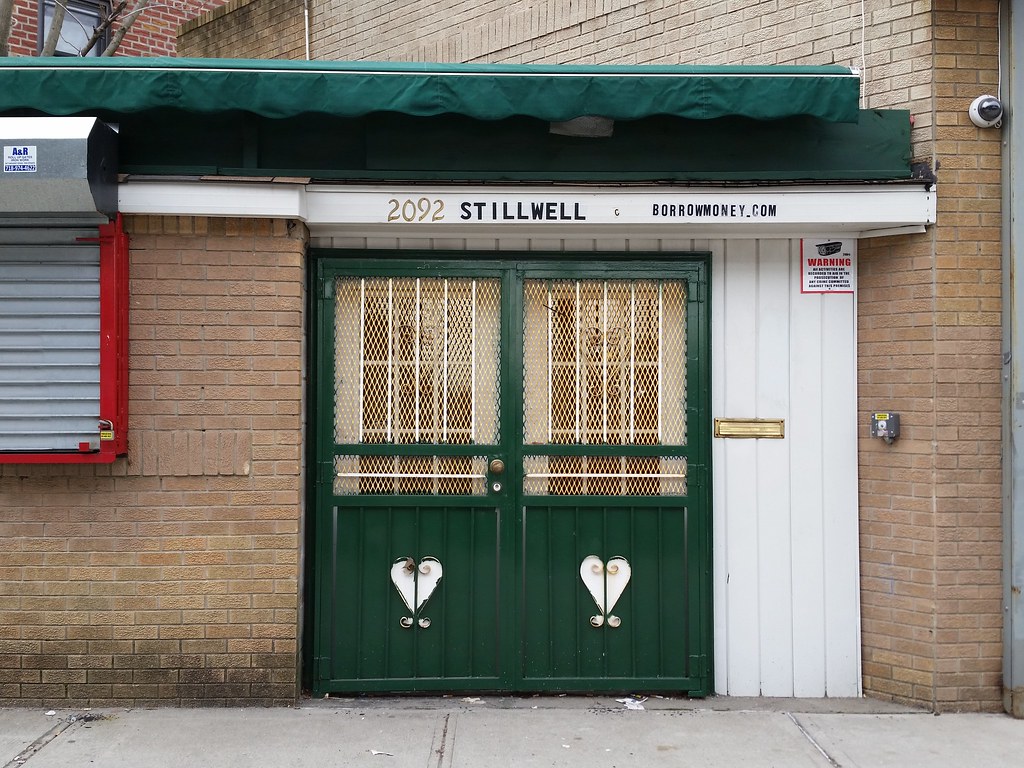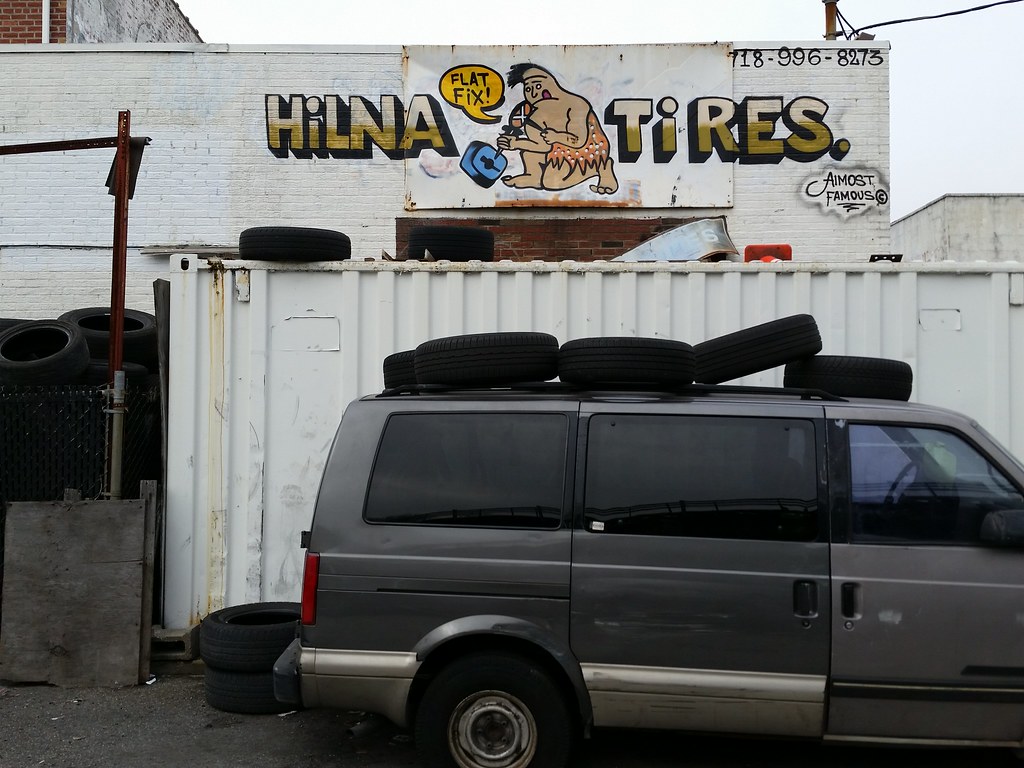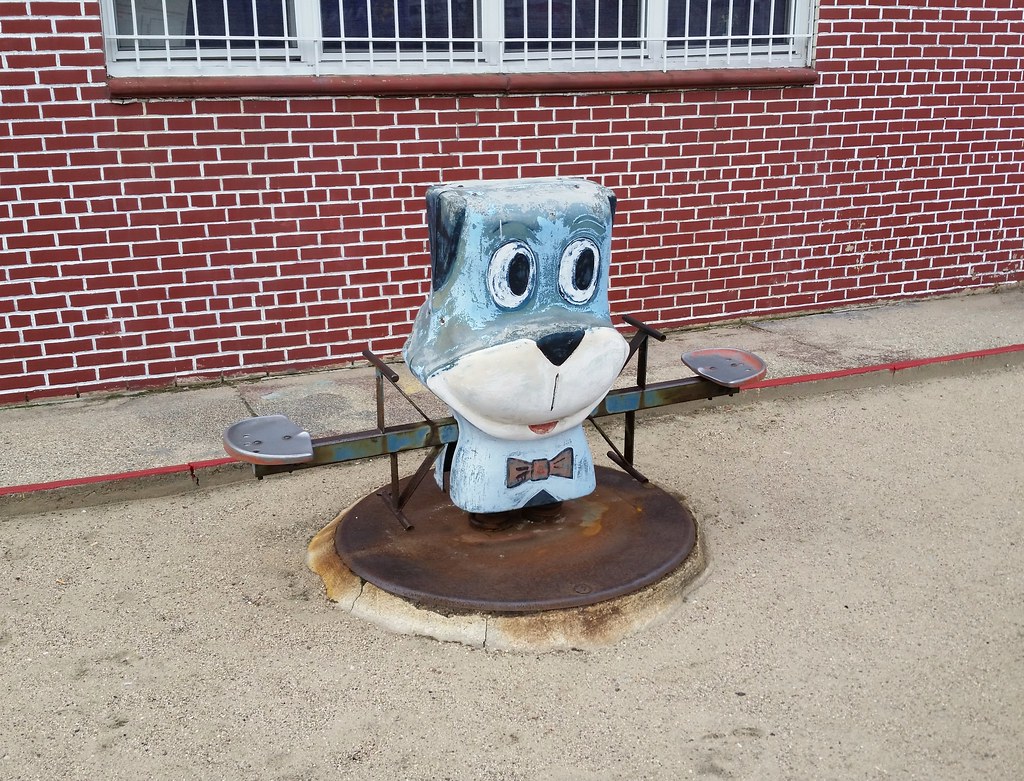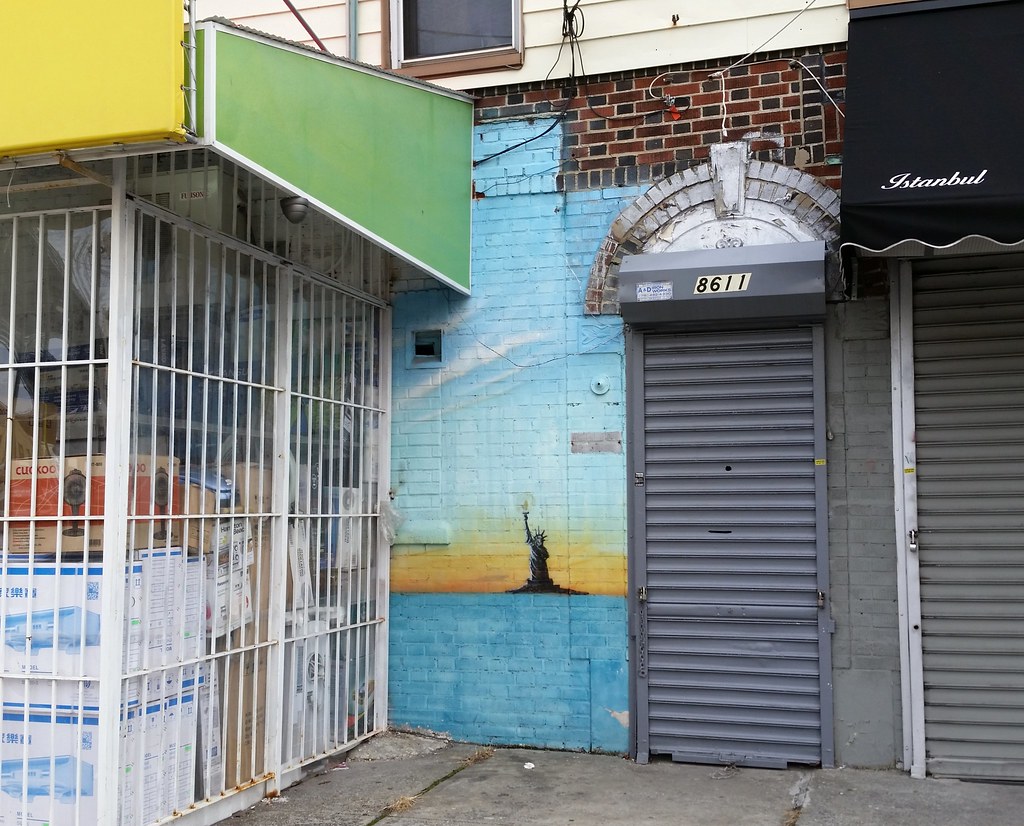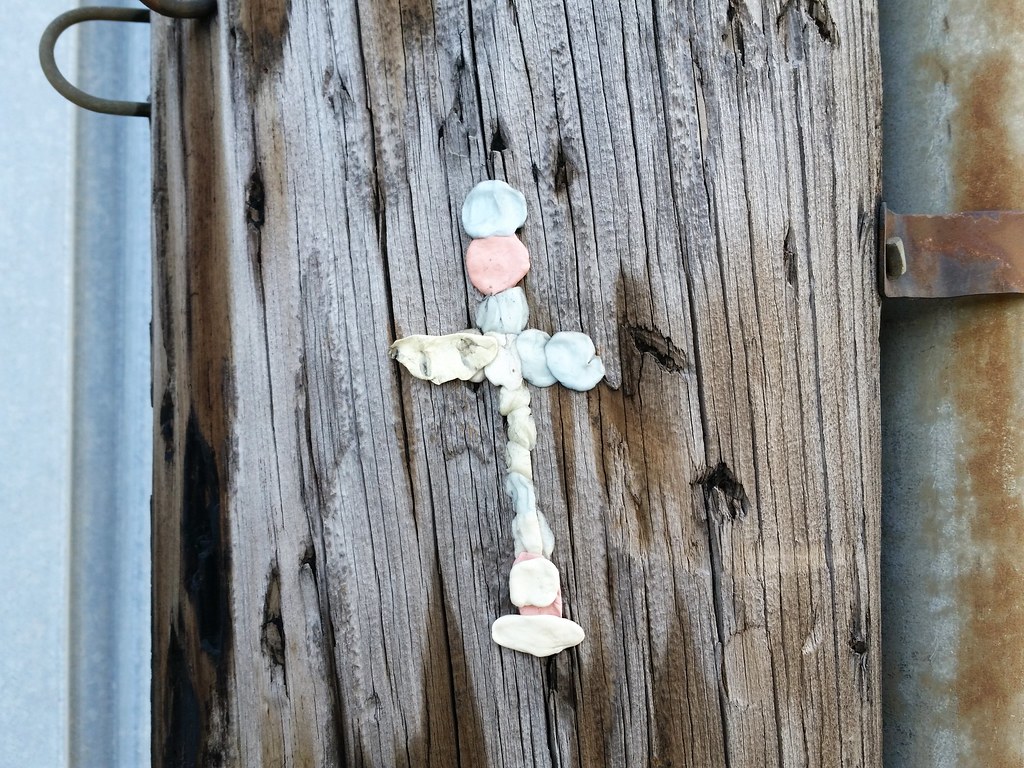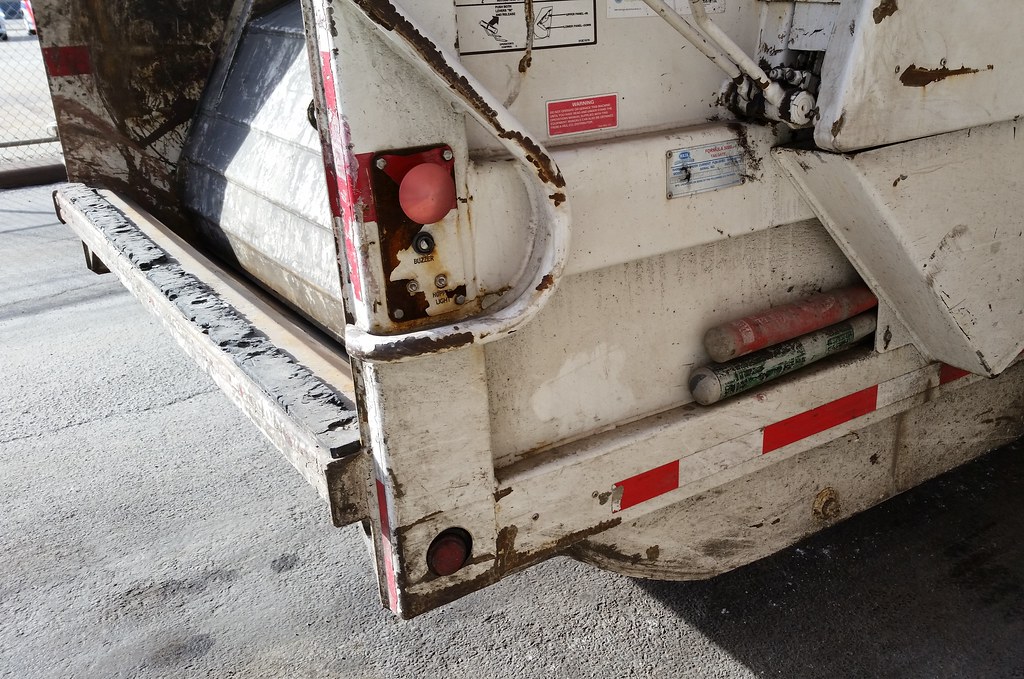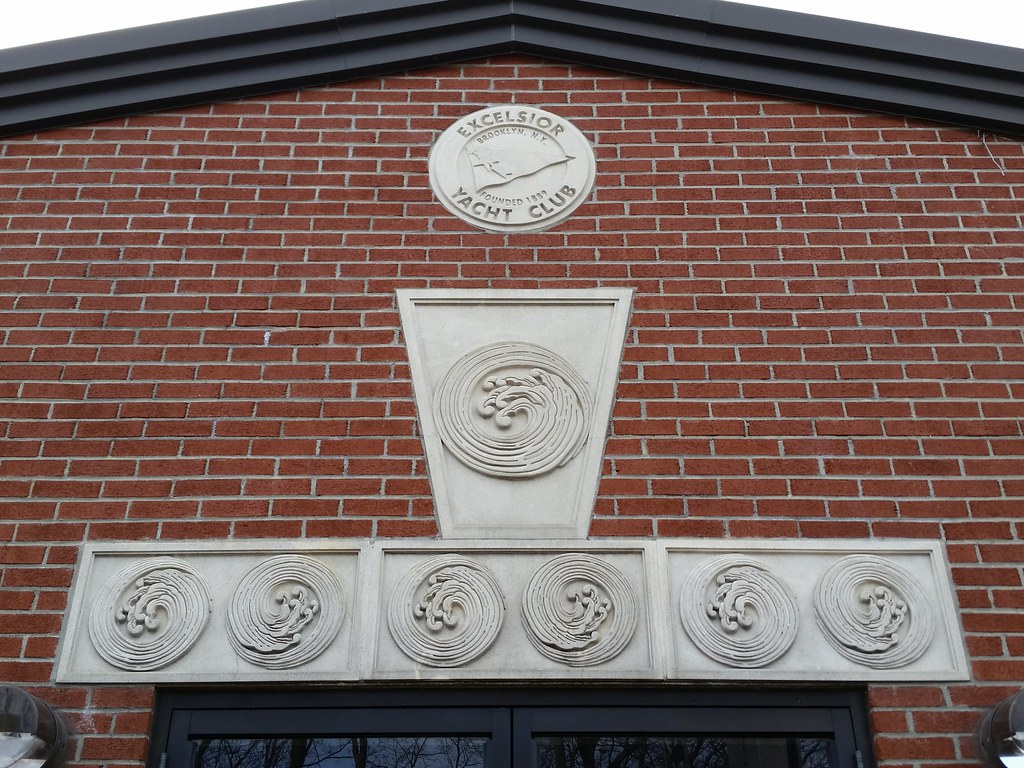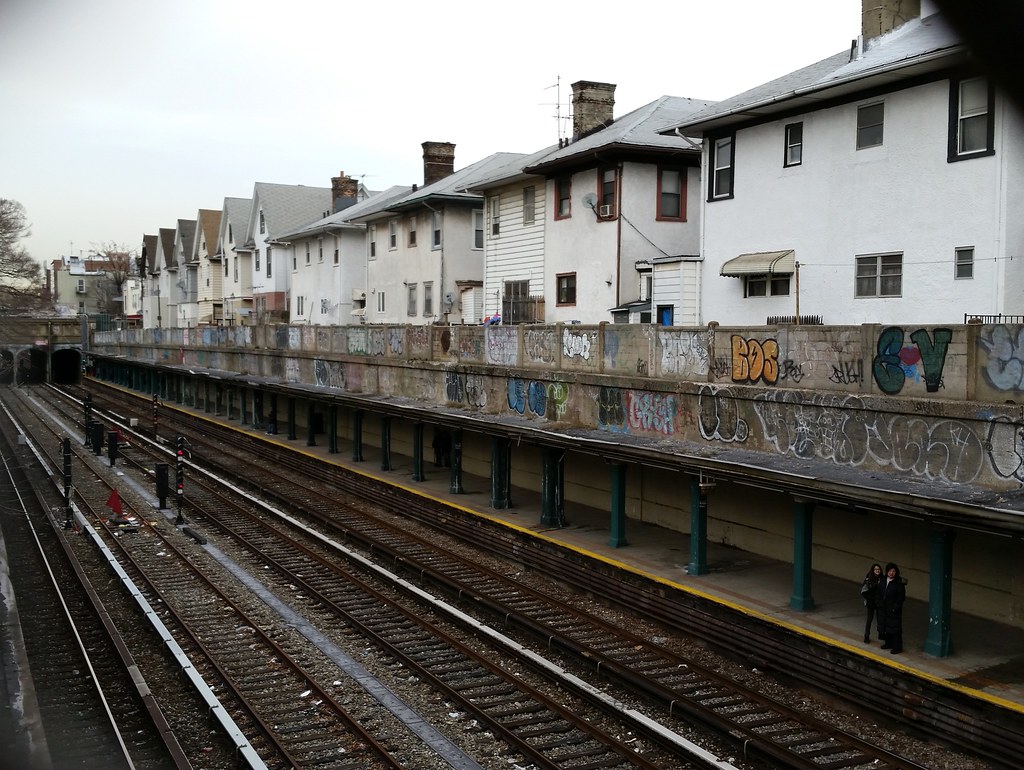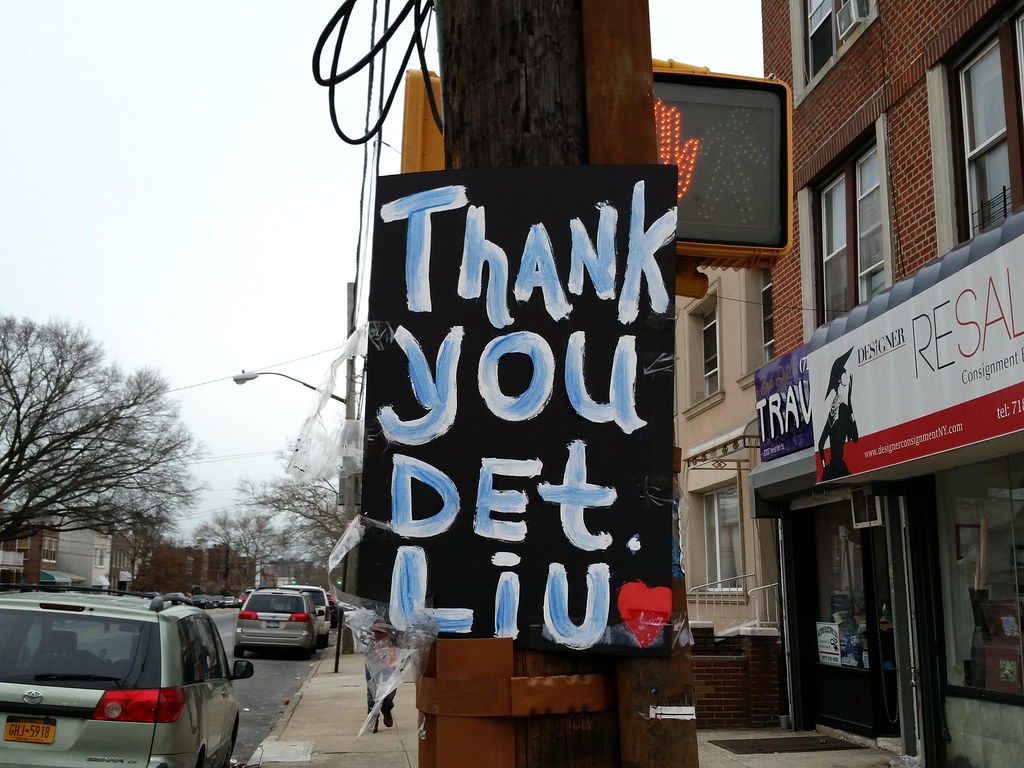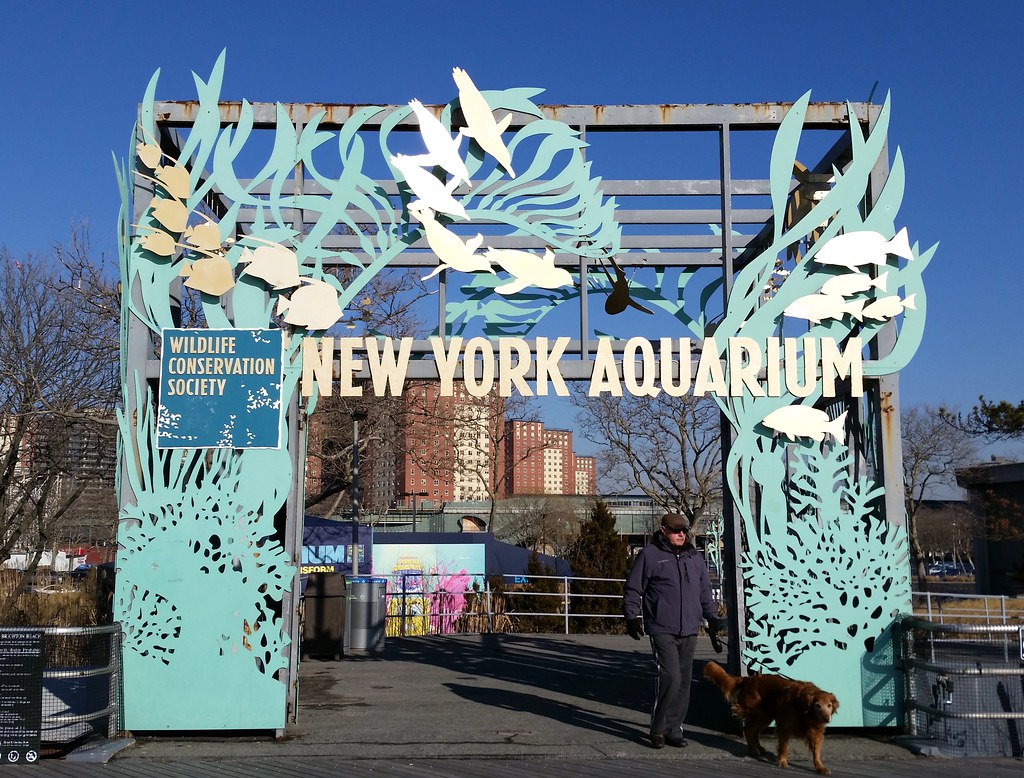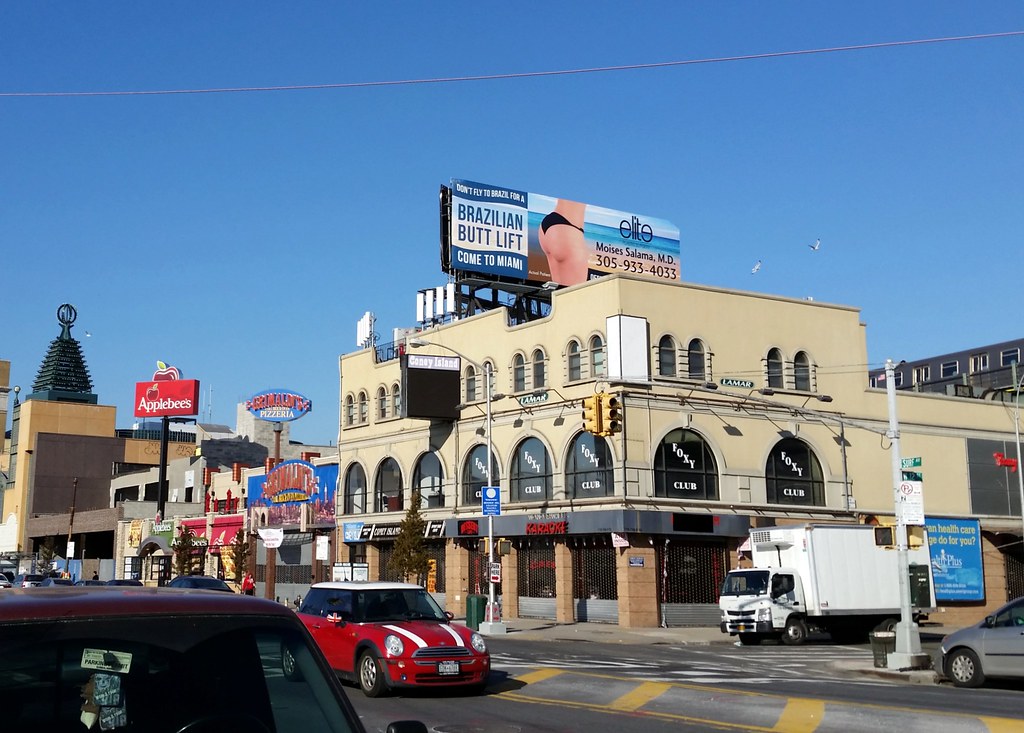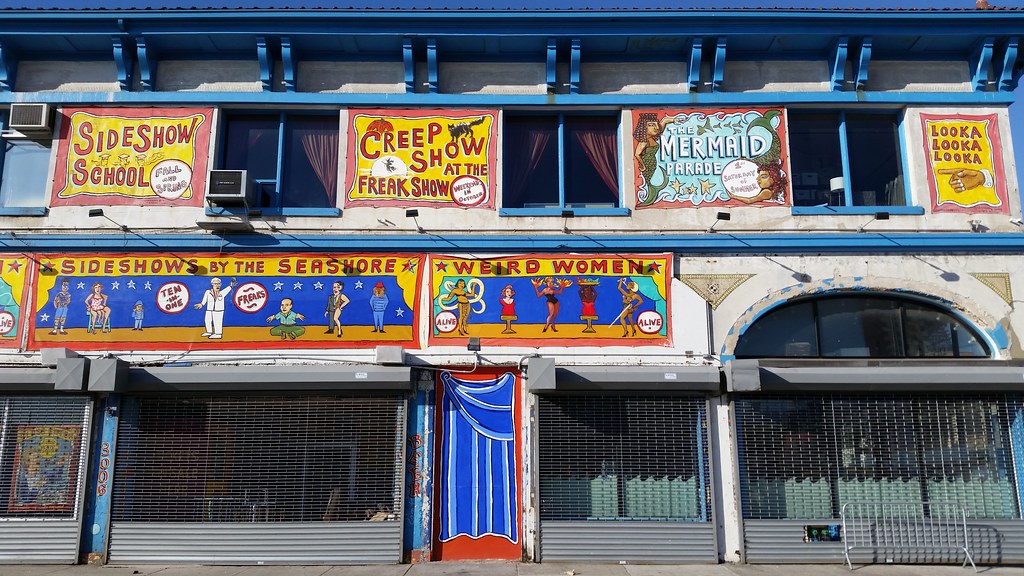
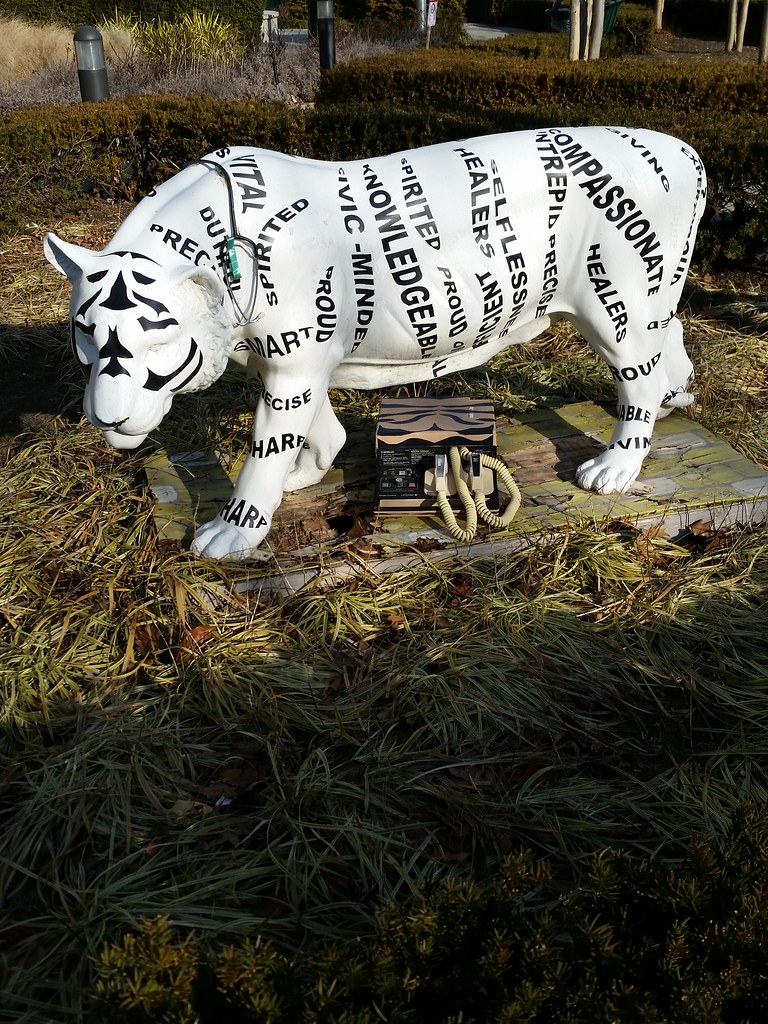
at the north campus of Staten Island University Hospital
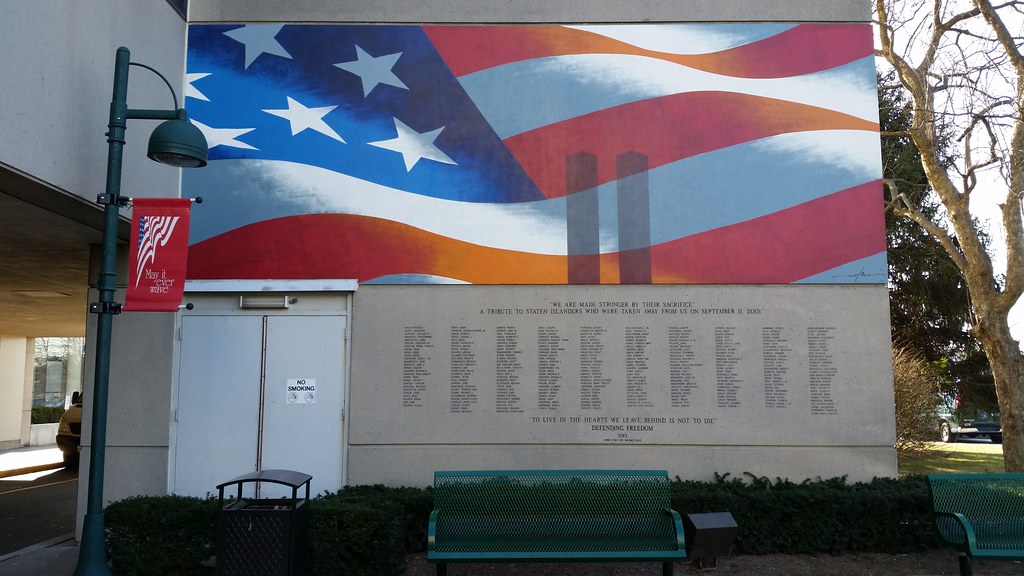
A TRIBUTE TO STATEN ISLANDERS WHO WERE TAKEN AWAY FROM US ON SEPTEMBER 11, 2001
This is part of a little memorial park area at the north campus of Staten Island University Hospital.
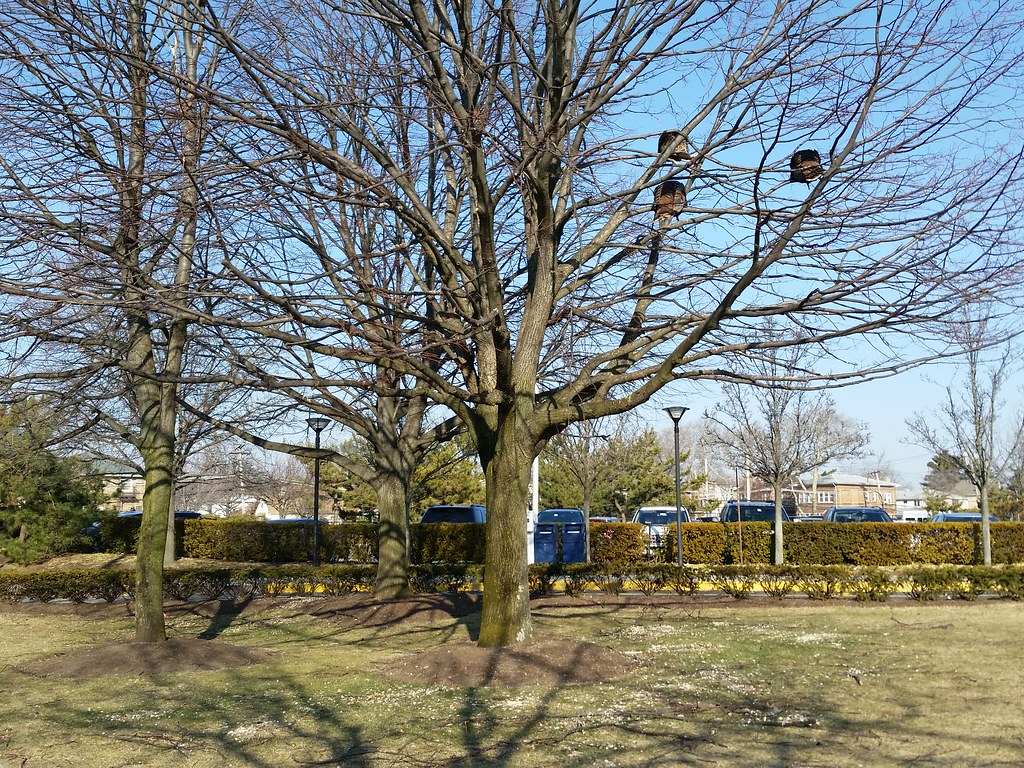
The north campus of Staten Island University Hospital, adjacent to the South Beach Psychiatric Center, is a favorite hangout for the famous Staten Island turkeys.
See all the whitish stuff on the ground? That's turkey poop. Must be great for the hospital's image.
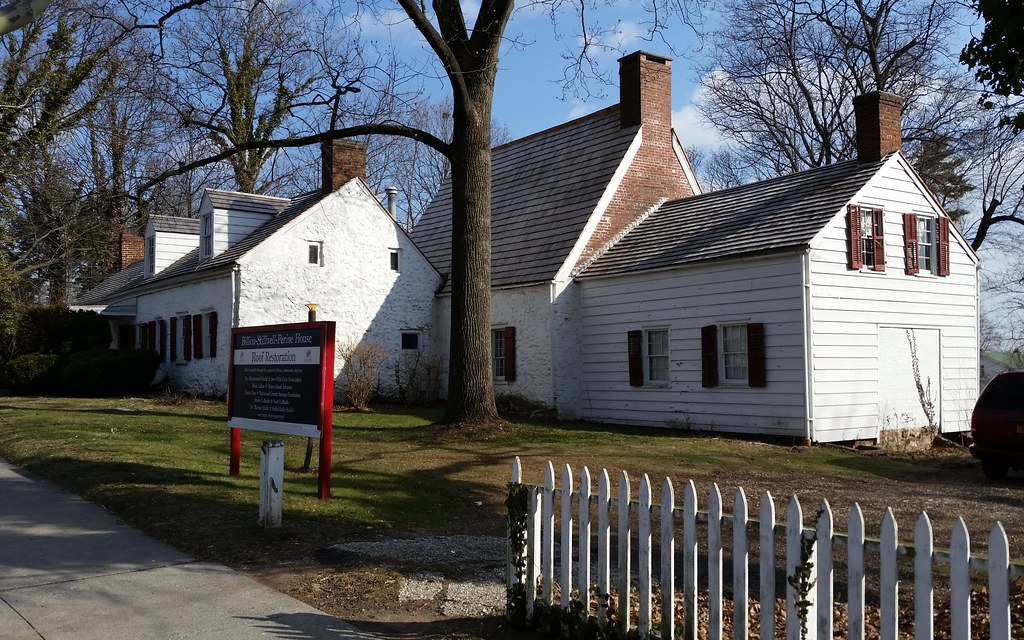
The original portion of this house (the steep-roofed section at center), built around 1662-63, is said to be the oldest remaining structure on Staten Island.
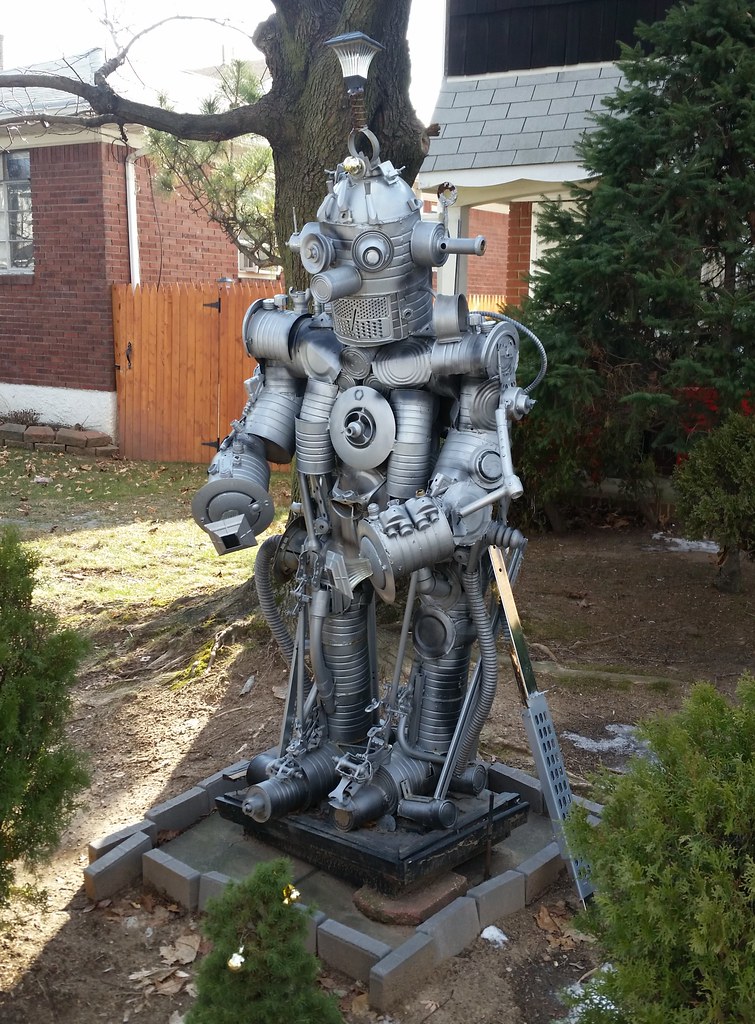
This robot sculpture and two others can be found outside the Steam Powered Art Factory, a.k.a. the home of Chris Spollen, their creator. Take a look inside the factory!
(Mr. Spollen can apparently also be seen riding around town on occasion in one of the funky streamliner bike shells that he and his brother have built.)

This storefront has been mysteriously cloaked in plaid since at least October 2007. I only know three other things about the place:
1) It is owned by "The Gam Gee Lau Irrevocable Trust".
2) According to the sticker on the door, the property is protected by the Flatbush Detective Agency, which will pay a "liberal reward" for any information "leading to the arrest and conviction of any person or persons committing larceny on these premises."
3) According to the Department of Sanitation sticker to the left of the door, "This establishment's sidewalk and gutter will be inspected for cleanliness every day between the following hours: 11:00am to 12:00pm and 4:00pm to 5:00pm".

Louis Neglia
P.S. Check out the ridiculous mansion across the street to the right.
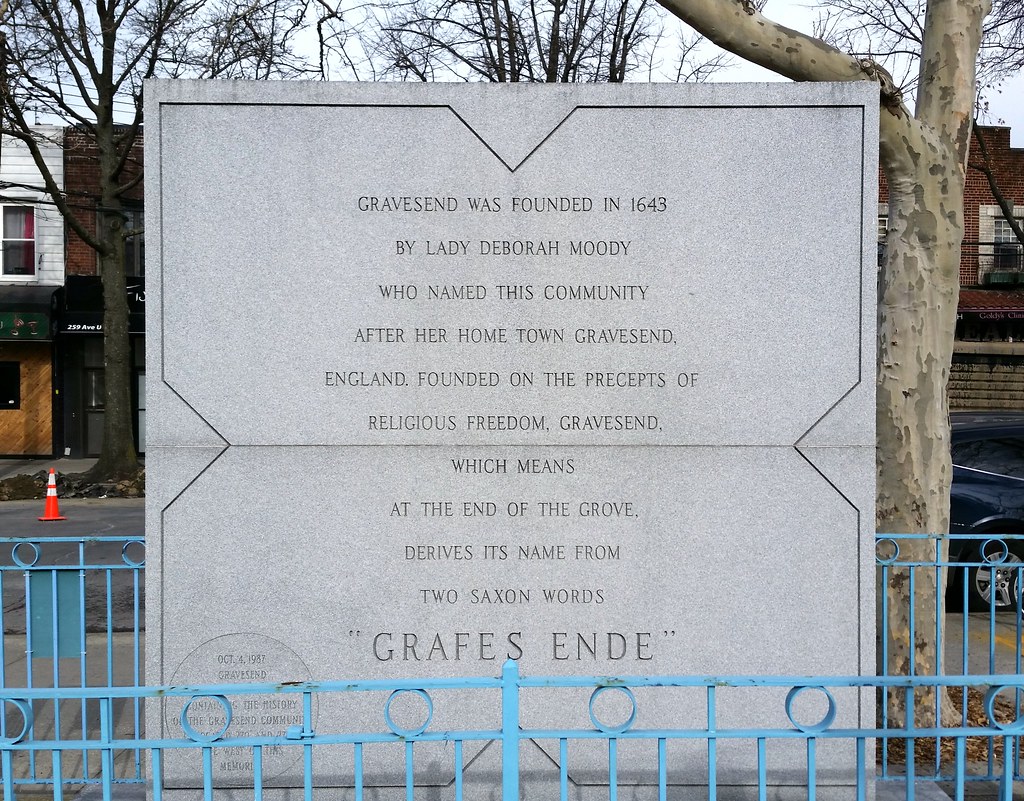
Gravesend was founded in 1645 (not 1643) by Lady Deborah Moody, an Englishwoman. According to the city's Landmarks Preservation Commission:
The Gravesend town charter was the first in the New World to list a woman patentee, and one of the first to expressly allow freedom of religious beliefs for its inhabitants. . . . It was also the first land document in the New York area to be written in the English language, as the surrounding areas were primarily settled by the Dutch.The original layout of the Gravesend town center, a 16-acre square bisected by two perpendicular roads (map), has survived to this day as a little two-by-two square turned at an angle to the street grid that has emerged around it (map). We're just passing by one corner of that square today; we'll be back another time to walk the streets of the old village and see what's there.
(At the bottom left corner of the monument above, an inscription reads: "OCT. 4, 1987 — GRAVESEND TIME CAPSULE CONTAINING THE HISTORY OF THE GRAVESEND COMMUNITY IS LOCATED 270° AND 27 FT. DUE WEST OF THIS MEMORIAL".)
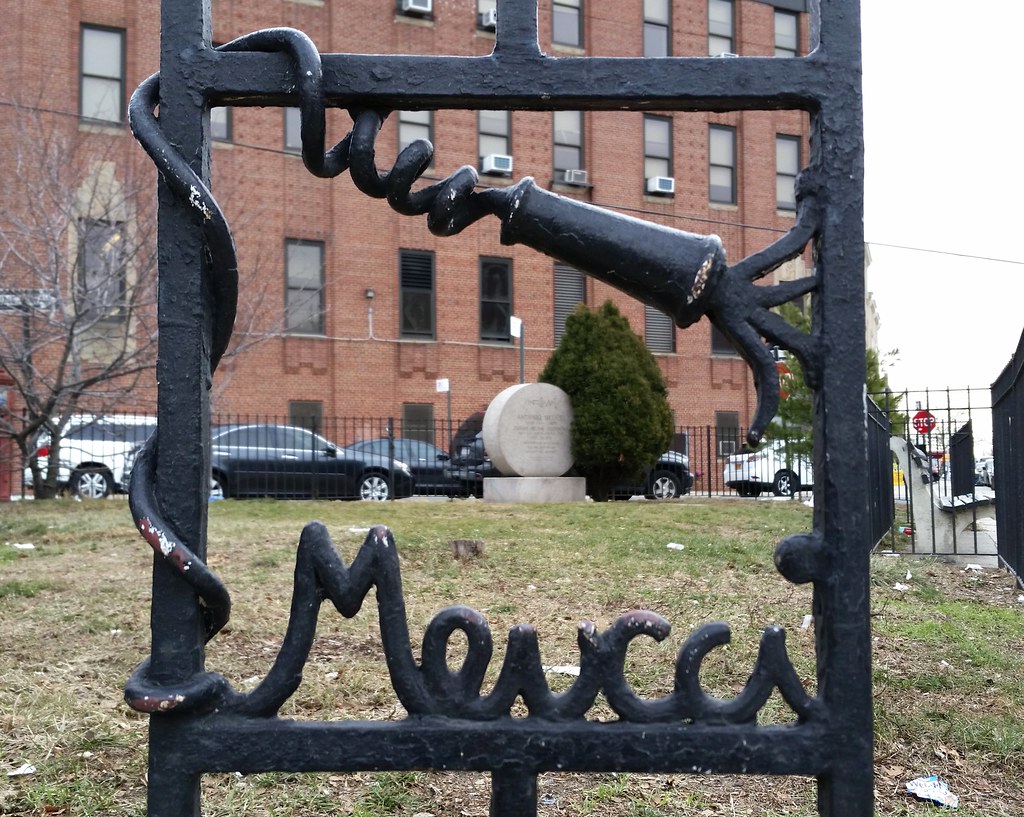
This parklet memorializes Antonio Meucci, a telephone pioneer. On a previous visit, we took a look at the monument to Meucci standing in the background of this shot, which proclaims him the "father of the telephone".
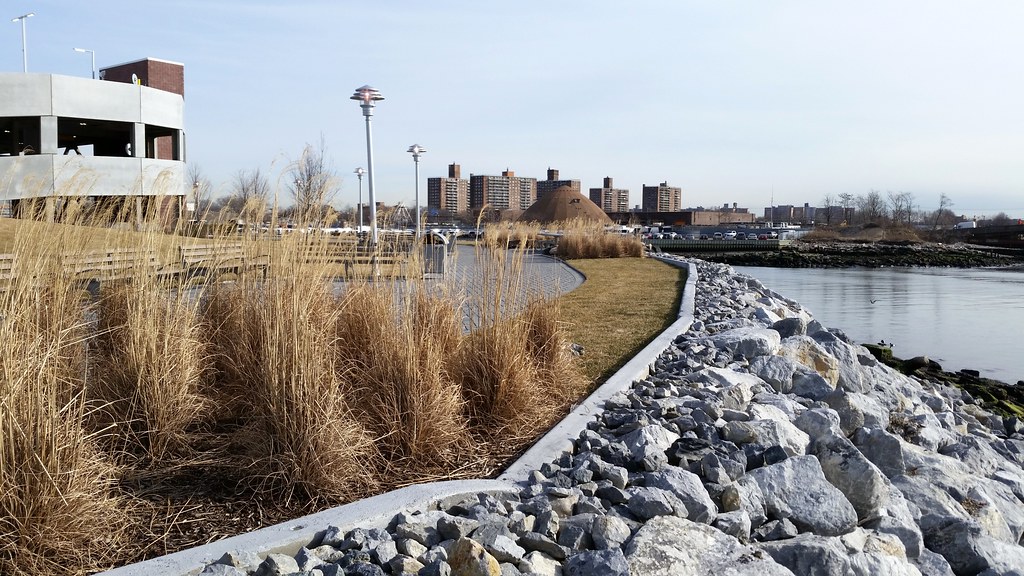
This peninsula jutting out into Gravesend Bay was constructed from landfill sometime in the latter half of the 20th century (aerial photos: 1951, 1996). I don't know what it was originally used for, but in recent years it served as a school bus parking lot. The edges of the peninsula were once higher and dropped off sharply toward the water, as I discovered in 2009 when I visited with some friends; at the tip of the peninsula (about where I was standing when I took the photo above), someone had secured a long rope to the top of the slope to aid in climbing down to the rocky beach at the base. Starting in December 2012, the site was redeveloped for retail use, and a giant BJ's Wholesale Club just opened here in mid-September. The construction of a public walkway along the shore (pictured above) was required by the city's waterfront zoning regulations.
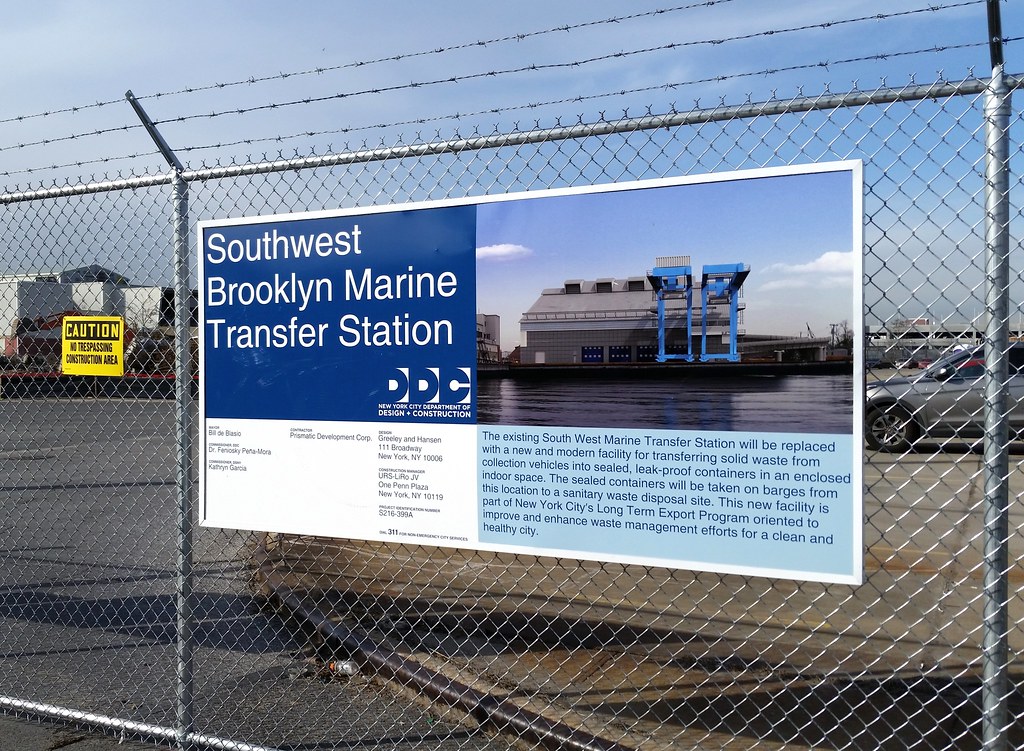
The city's decision to build a new marine transfer station here on Gravesend Bay, part of an effort to "distribute garbage disposal across the city more equitably", has angered many in the community. No surprise there. Everyone wants to continue producing ridiculous amounts of waste, but no one wants the disposal of that waste to affect them in any way. But the new twist here is that, in addition to the standard NIMBY concerns about such a project — truck traffic, air quality, odor, noise — the transfer station's opponents have come up with a novel argument: that some unexploded anti-aircraft shells that fell overboard in 1954 may be lurking on the floor of the bay and could be accidentally detonated by the dredging that will occur during construction. (Starting at the bottom of this page, the Department of Sanitation explains why this is not a significant issue.)
But really, I'm all for nixing the transfer station. Since nobody wants to live near such a place, I say we should just shut down all the waste handling facilities in the city and let people wallow in their own filth until they find a way to produce less of it.
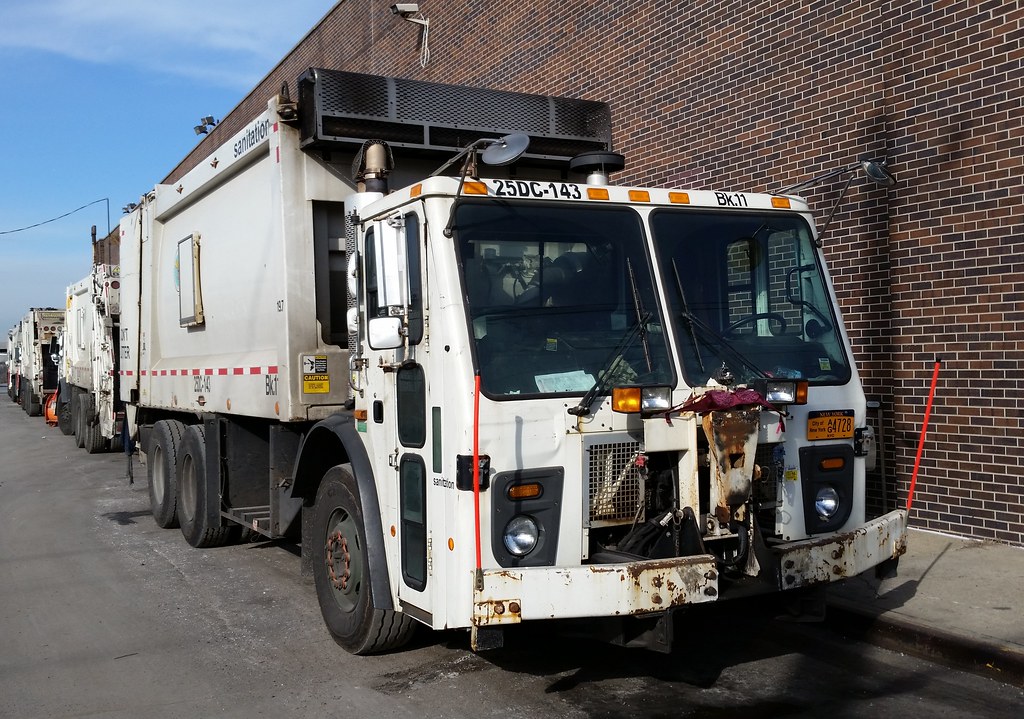
If you look closely, you'll notice a wine-colored bra fastened to the front of this garbage truck. Is this an indication that a female sanitation worker operates the vehicle? Or is it just a new take on the old chicks-dig-stuffed-animals approach to truck decoration?
From an excellent NY Times article about the "grille-mounted cuddle object[s]" often found on the front of big trucks:
Robert Marbury, an artist who photographed dozens of Manhattan bumper fauna for a project in 2000 . . . said he had once asked a trash hauler why he had a family of three mismatched bears strapped to his rig.
''He said: 'Yo, man, I drive a garbage truck. How am I going to get the ladies to look at me?' ''

I saw a number of blue ribbons in the area today, but I couldn't figure out what they meant — until I passed by what turned out to be the house of Wenjian Liu, one of the two police officers (the other was Rafael Ramos) gunned down in their patrol car in Bed-Stuy on December 20. After seeing a little memorial sign in front of the house, I realized that the ribbons had been put up by neighbors as a tribute to the murdered officers.
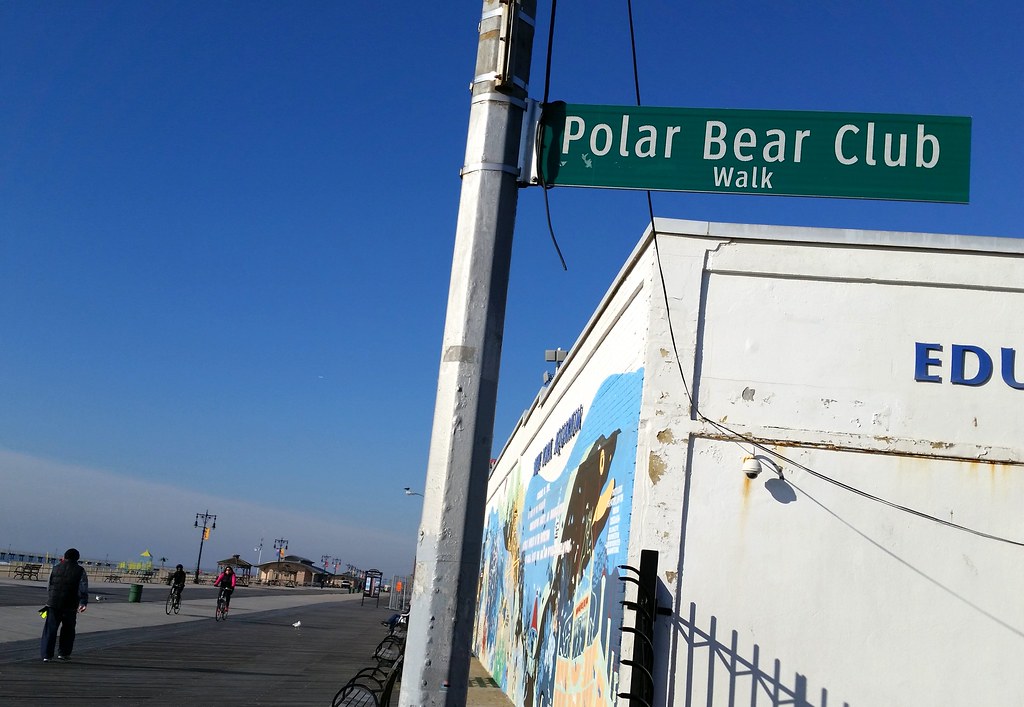
This honorary street sign marks the location on the Coney Island Boardwalk where members of the Coney Island Polar Bear Club meet every Sunday from November to April for their weekly dip in the Atlantic Ocean. According to its website, the club was founded in 1903 and is the oldest winter bathing organization in the United States.
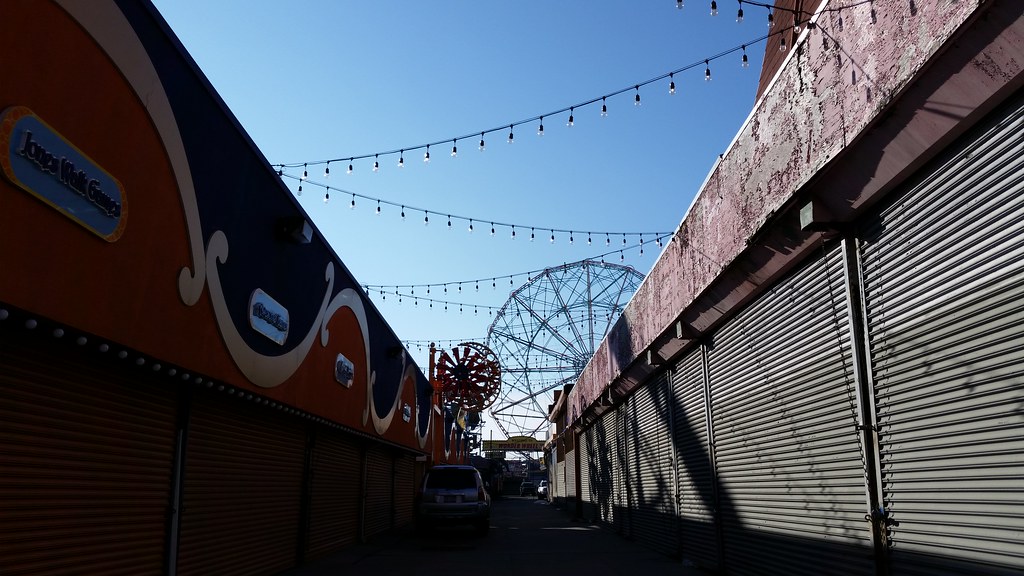
If this were a summer afternoon, the stalls at left would be open and you'd see people playing all sorts of carnival games, like the bathroom-themed Stinky Feet. The stalls at right, however, would still be shuttered. The property on that side of the walkway, including the 1880s Grashorn Building (said to be Coney Island's oldest structure), has been vacant for several years now, courtesy of Joe Sitt, Coney Island's infamous "un-developer".
Looming in the distance is the Wonder Wheel. If you look closely, you'll notice that all of its cars are missing. It turns out that they get taken down each year during the off-season, and their return to the Wheel "is the first sign of spring in Coney Island. Being there to see the 24 cars go up, the Swinging ones first and then the Stationary, is like seeing crocuses bloom before your eyes."

